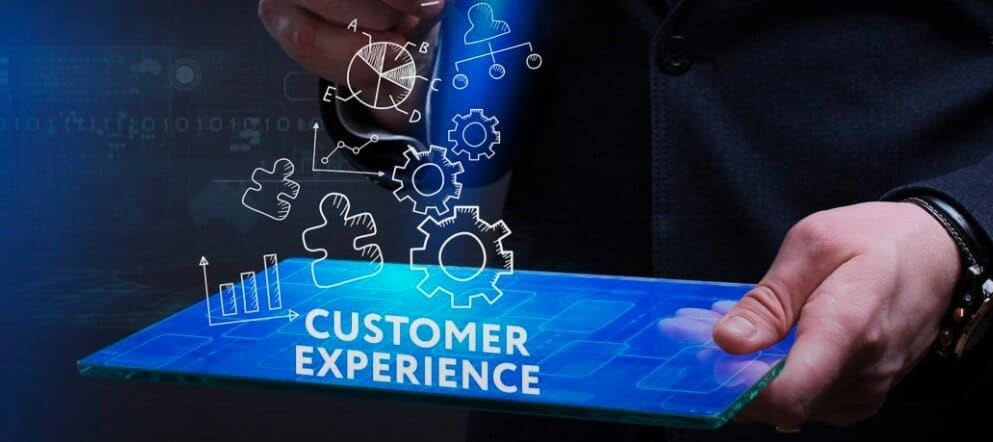Introduction
Customers no longer care about your company’s customer care department once they’ve made a transaction.
According to the studies, more than two-thirds of the organizations today consider customer experience to be the differentiator while competing in their sector. Customers are frequently kept on hold, waiting and are unable to obtain information on their own, even after spending hours searching a company’s knowledge base for an answer.
When it comes to defining a negative customer experience, most of us can agree on a certain broad term. What, on the other hand, can we say about a positive customer service experience? Or perhaps a remarkable one.
We’ll go through what great customer service looks like and how you may give it to your company in this piece.

What is an exceptional customer experience?
The ideal customer service is one in which the customer achieves the desired goal with the least amount of friction possible. The is a little hazy, but that’s to be expected given that the perfect outcome varies by sector, company and product.
What you need to think about is how you can go above and beyond excellent enough to truly impress your consumers.
What does it take to provide an exceptional customer experience?
Customer experience or CX is the sum of all interactions a customer has with a company, both before and after the sale. Depending on the sort of connection and communication channel, an exceptional customer experience can take numerous shapes.
However, here are some characteristics of excellent customer service:
1. It makes your customer feel special
Every encounter should be based on the principle of individual worth, mutual respect and a shared vision of your future as their preferred brand. Consider how you may let your client know that.
- To your company, they’re more than just a transaction.
- Their contribution of time and money enables you to continue working on your purpose.
- The personal path is connected with your company’s
2. It goes beyond their expectation
Customer service begins with setting expectations. Delivering on these expectations you establish is the other half of the coin.
You generate a negative experience if you fail to deliver. You satisfy the deal if you deliver, which is what the consumer expects (no more and no less). They may be content, but they aren’t overjoyed. Why should your consumers thank you for accomplishing the job they hired you to do?
3. It goes beyond what competitors deliver
In certain circumstances, you may believe you’re going above and above when you’re merely adhering to industry standards.
Customer service excellence does not occur in a vacuum. If your customers know what type of experience your rivals provide and it’s on par with or better than yours, you might not be surprising them.
For example, if everyone in your space gives a free 30-day guarantee, it might not be as appealing as you believe. This is especially true if the consumer finds it more difficult to make use of the guarantee than it does with your rivals.
4. It does all without any friction or inconvenience
Your customers expect a clear and straightforward procedure when doing business with you. When customers encounter problems, they want the process of resolving them to be easy, quick and via a channel that is familiar to them.
Communicating with your customers to learn about their requirements and desires is a certain approach to identifying and reducing friction spots in your customer experience.
5. Thank customers at the start and finish of each encounter
Simple solutions are often the most successful and thanking the customers at the start and the conclusion of each encounter is one of the most effective methods to enhance customer service.
Starting every engagement with a thank you remind the consumer that you value the fact that they picked your firm first out of all the options available to them.
Thanking someone after doing business with them – even if it doesn’t result in a purchase – is just courteous, and it gives the potential customer a nice impression of both your employee and your company. Simple civility goes a long way toward encouraging a return visit to make a future transaction.
6. Make use of digital tools to prioritize individuals
People are more digitally linked now than at any other time in history, thanks to the smartphone. This gives a once in a lifetime opportunity for the service provider, merchants, and restaurants to make use of this connection to deliver greater customer service via smartphone and other mobile devices.
Allowing consumers to control account services and features is also crucial to delivering a positive CX since customers have a simple injury or issue that can be resolved quickly via mobile or direct chat.
Customers that have very little time to devote to your organization may appreciate the opportunity to place the purchase of items or services online independently. Avoid referring users to your app for help too frequently, since this can frustrate them and turn them off to your business.
7. Use social media methods that work
More potential for personal relationships is accessible on social media than on any other publicly available resource.
Individuals may remark, discuss, and show interest in your company, brand, products, and services at any time of day, anywhere around the globe.
If you’re not already using social media to bring a personal touch to your customer service, you should do so right immediately. A high-level CX strategy is to use social media to make customers feel like insiders and intimate confidants with your business.
8. Wherever your customers are, talk to them
The success of your customer experience plan depends on proactive post-transaction and post-visit follow-up using the client’s contact information.
These calls and messages are opportunities for them to go over the benefits of a possible or recently acquired product or service in case they have run into any issues or have come up with new queries after their visit.
It also exhibits a tangible interest in their experience with your business long after they have left your location or spent their money with you, which is crucial to any CX strategy. Don’t miss out on these opportunities.
9. Gather consumer input and put it into practice
When it comes to optimizing your customer service experience, you don’t have to guess. If you aggressively seek feedback from your clients, they will tell you. You may obtain a pulse on your client base’s contentment and areas where you’re falling short of expectations by conducting an email survey or using an NPS score system.
Brands make a lot of mistakes when it comes to Customer Service
Here are some frequent blunders to avoid while you work to enhance your company’s client experience:
1. Customer incentive schemes are out of control
Many customer reward systems have a propensity to overprize potential customers and new business at the expense of existing customers. This isn’t a good way to spend money. You must maintain a balanced reward scheme for new and current clients.
As much as you want to focus on gaining new consumers, you also need to thank existing customers who have been a part of your journey thus far. Even the most basic customer rewards programmes and incentives frequently exceed the expectations that most consumers have when they first join your company.
Overall, it’s best not to overspend on your rewards programme when it comes to marketing and retention. Rather, put those funds into a customer loyalty or referral programme to keep your current customers pleased.
2. Making it tough for your customers to accept your brand.
Determining your customer’s route to brand adoption should be a step-by-step process, not an open-ended conversation about possible transaction outcomes.
For each customer, you’ll need a modular, flexible strategy that will lead them and their customer care representative through the whole process. It’s a formula for CX catastrophe if you don’t have a real strategy, or if your goal is only to talk or look.
3. Forgetting that excellent customer service starts with the staff.
If you look after your employees, they will look after you.
Unhappy employees are unable and unwilling to deliver the individual buy-in required to make your customer experience tactics successful. You want to convince others to believe in your vision and brand.
That involves treating people in a way that surpasses their expectations for personal benefits, business perks, and personalised incentives from their employer. Your clients care about how you treat your employees.
When an employee’s requirements are addressed in plenty, he or she will accomplish more for you and the client.
4. Making things more complicated
The more complicated a customer’s interaction with you grows, the less happy they will be (and the harder it becomes to scale your operations).
It doesn’t have to be a frustrating and bad customer service experience. In fact, if you’re subtle, you might be able to turn opponents into promoters.
It only takes a little thinking and consideration. Respond to client concerns and annoyances where they arise (and quickly). Give clients the tools they need to solve problems on their own. Make sure your customer care representatives are pleasant and helpful (their happiness is a powerful change agent for angry customers).
In general, start investing in your customer service experience, and it won’t simply be a cost, but a true differentiator for your company.



